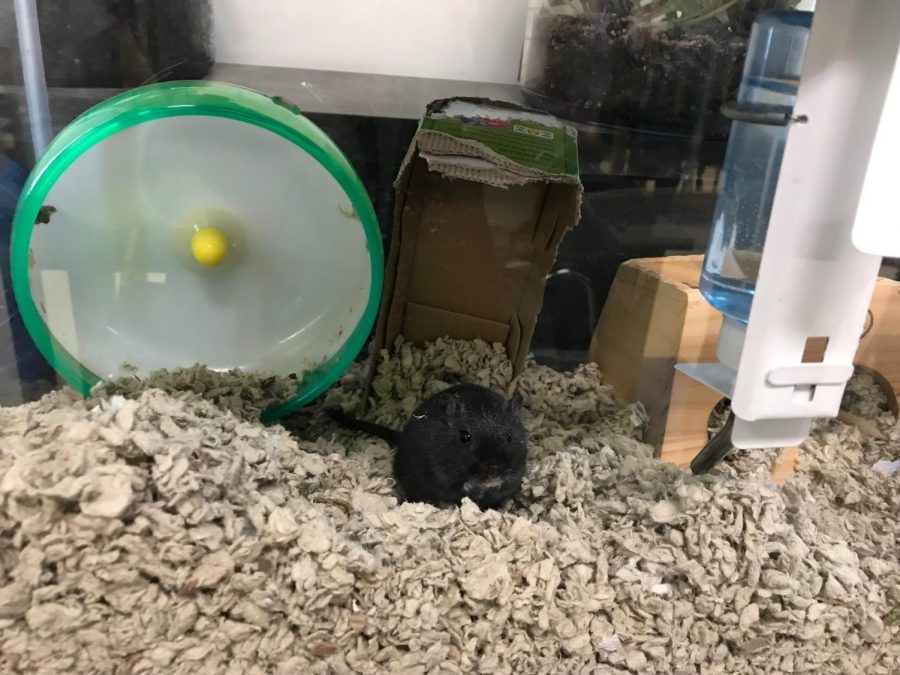Chinchillas, lizards and turtles, oh my!
April 3, 2019
When Malin Hensel volunteered to take their advisory teacher’s hermit crab home over summer vacation, they had no idea that they would be so impacted by the experience.
“It was really nice,” Hensel, Div. 051, said. “At the time, I had depression and it gave me something to care for.”
Many teachers at Lane over the years have hosted class pets. Teachers have a variety of animals in the classrooms, from turtles in marine biology to the chinchilla in zoology.
Ms. Gallegos, a marine biology teacher, said she believes having animals in the classroom is advantageous.
“The kids do build a little friendship with the turtles,” Gallegos said.
According to a 2017 study published in AERA Open, class pets can increase motivation in students, teach responsibility and moderate stress.
Ms. Heath, a zoology teacher, echoed the sentiment that animals can help with stress.
“I know it can be calming for some people to just handle animals or take care of animals,” Heath said.
Although animals in the classroom might seem like they have always been there, this is not the case. Many teachers have inherited the animals during their careers, as was the case with Gallegos, who inherited the turtles from Aquaponics.
“I went on maternity leave, and when I showed up again, they were here,” Gallegos said.
Heath has also inherited animals in the past.
According to Heath, if someone cannot take care of an animal at home, they often ask her if she can take it for the classroom. She acquired her chinchilla and bearded dragon from students.
“Cheech [the chinchilla] was a student’s that got two new puppies,” Heath said.
It is common for students to take home class pets over breaks. According to Gallegos, students typically take the turtles home over the summer.
Heath also relies on students to take pets home over break because the animals cannot stay at Lane.
“I have a condo, so I can’t fit them all in, and I do need the student participation,” Heath said.
Heath also said that she has had pets that were more unconventional that posed placement issues over breaks.
“Some students liked the tarantula, but the families just didn’t want a tarantula in their home. So they’re animals I just won’t get again because they’re just so hard to place with people,” Heath said. “I had giant hissing cockroaches, and there were students that liked them but no parents that wanted to take them home.”
If given the opportunity, Hensel said that they would definitely take home a class pet again.
“It made me have a love for hermit crabs,” Hensel said.
Some pets seemed good in theory, but were impractical for the classroom, according to Heath.
“Have you ever had hedgehogs? I thought that would be a cool thing to have, but it just hated us; it was so miserable,” Heath said.
She said that rodents also posed their own unique issues.
“I had never been around rats — they’re super curious and they have personalities, and I really enjoyed having them, but like hamsters and other rodents, they only live two years,” Heath said.
Having class pets can also be impractical because of the expenses.
“I’ve run up some vet bills,” Heath said.
She said that in the past she turned in receipts to get reimbursed for the money she spent, but now any money spent has to be pre-approved.
“How do I get pre-approval for a vet bill? Now there’s a deadline, so if it’s after April we can’t get reimbursed, and that’s a concern,” Heath said.
Ultimately, Heath feels that class pets are valuable when teaching zoology.
“Could you teach those things without animals? Sure, but I think it’s more fun. It’s a lot of work though,” Heath said.







